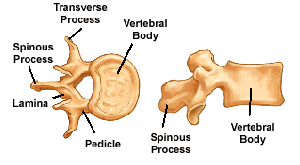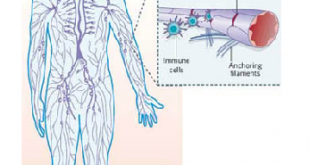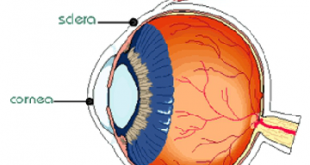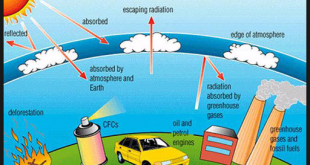MOTION When a body changes its position continuously with respect to a stationery object, which is taken as a reference point. It can be depicted by this graph: Motion includes both distance and displacement. Distance is a scalar quantity because it has magnitude only. Displacement is a vector quantity because …
Read More »What is Vertebral Column and Structure of Vertebra
VERTEBRAL COLUMN The vertebral column consists of 26 bone segments called vertebrae that are arranged in five divisions from the base of the skull to the tail bone. The first seven bones of the vertebral column from the neck bone are the cervical (C1-C7) vertebrae. These vertebrae do not articulate …
Read More »What is Oral Cavity
ORAL CAVITY (THE MOUTH) The alimentary canal begins with the oral cavity or the mouth. The major parts of the oral cavity are: Cheeks: They form the walls of the oval-shaped oral cavity. Lips: They surround the opening to the oral cavity. Hard palate: It forms the anterior portion of …
Read More »Male Reproductive System
This Article is useful for NEET, UPSC and Other Aspirants. MALE GONADS The male gonads consist of a pair of testes, also called testicles. They develop in a sac, called scrotum which is present in the extra abdominal region. The scrotum exposes the testes to the lower temperature than …
Read More »IP Address Representation
In this blog I discussed about What is IP address and how to represent it. Generally IP address is represented in 32-bit format. In expansion of IP is Internet protocol address. Dot (.) is the decimal and this notation is used to represent as number format data into string of …
Read More »PATHOLOGICAL TERMS RELATED TO THE RESPIRATORY SYSTEM
UPPER RESPIRATORY DISORDERS Croup: Acute respiratory syndrome in children and infants, characterized by obstruction of the larynx and by barking cough. Diptheria: Acute infection of the throat and upper respiratory tract caused by the bacteria Cornyebacterium. Epistaxis: A condition when bleeding occurs through nose. Pertussis: Bacterial infection of the pharynx, …
Read More »What is Lymphatic System
LYMPHATIC SYSTEM (FOR NEET, SSC & UPSC) The lymphatic system is a part of immune system; it helps the body to fight against disease and infection. The lymphatic system includes a network of thin lymphatic vessels that branch like blood vessels into tissues throughout the body. Lymphatic system also removes …
Read More »Human Eye Structure
HUMAN EYE (FOR NEET, SSC, UPSC) Human beings possess a pair of eye. These are the organ of sight. They act as an important sensory organ. DESCRIPTION OF HUMAN EYE Light rays enter the dark center of the eye, the pupil. The conjunctiva is a mucous membrane that lines the …
Read More »GLOBAL WARMING
Increase in the concentration of carbon dioxide in the air is one of the major causes of global warming. When the solar radiation fall on the earth’s surface, a part of the radiation is absorbed and a part is reflected back into the space. Green house gases like carbon dioxide …
Read More »Structure of Human Ear
HUMAN EAR (Helpful in SSC,APPSC,NEET and UPSC) The human ear is an organ of hearing and equilibrium that detect and analyses noise by transduction and maintains balance in our body. A mechanical injury that might stimulate receptor cells in the ear would produce sensations of sound, ringing in the ears. …
Read More » IT2EDU Empowering Education Through Technology
IT2EDU Empowering Education Through Technology





